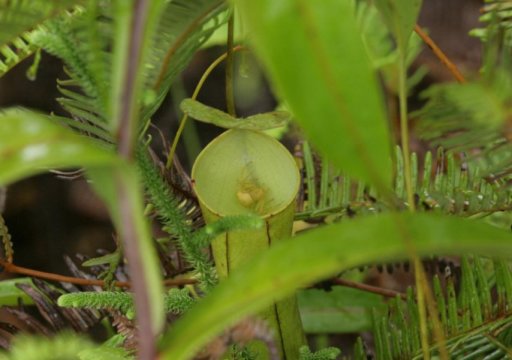[ad_1]
Two recent studies by ecologists from the National University of Singapore (NUS) have shed light on the relationship between the slender pitcher plant and its ‘tenant’, the crab spider Thomisus nepenthiphilus, providing insights to the little known foraging behaviours of the spider.
Thomisus nepenthiphilus is found only in the slender pitcher plant Nepenthes gracilis, which is native to Singapore and can also be found in Indonesia, Borneo, and Malaysia. Although the pitcher plant is a carnivore that traps and devours insects to supplement its nutrient requirements, the crab spider Thomisus nepenthiphilus is able to exploit the pitcher plant’s sweet-smelling nectar to catch its prey while at the same time, provide supplementary nutrients for its host.
“Our two studies provide important insights into the circumstances that favour cooperation over parasitism, and the results are pivotal in attaining a better understanding of these interactions,” said research supervisor Associate Professor Hugh Tan, who is from the Department of Biological Sciences at the NUS Faculty of Science.
The benefit of being ‘robbed’
In the first study, Assoc Prof Tan, together with doctoral student Mr Lam Weng Ngai and former undergraduate student Miss Robyn Lim, found that pitchers that are without any crab spider get more nutrients out of each prey, while those inhabited by ‘tenants’ trap more prey but get less nutrients from each prey.
Their laboratory experiments found that the crab spider ambushes flies that feed at the pitcher plant and sucks the body fluids of the insect prey. The crab spider subsequently drops the carcasses of the prey, which still contain some nutrients, into the fluids in the pitcher for it to digest. As such, although the crab spider ‘steals’ from the pitcher plant and gets the first taste of the prey, the net effect of this ‘burglary’ can still be beneficial to the pitcher plant as it gets the residual nutrients from the prey.
The findings suggest that when resources are scarce, this partnership between the crab spider and the pitcher plant is beneficial. However, when resources are abundant, this partnership is not favourable. The results of the study were published in the journal Oecologia on 14 August 2018.
“A trend that has been observed in recent mutualism research is that under more stressful conditions, the frequency and intensity of mutualism between the different organisms increases. Our findings support this observation. In other words, the age-old adage ‘a friend in need is a friend indeed’ is true not just for humans, but also for plants and animals,” said Assoc Prof Tan.
Big prey, big gains
Assoc Prof Tan and Mr Lam also conducted additional experiments in the natural habitat of the plants. Through field surveys, the researchers identified the species of prey that were found to be in greater numbers in pitchers that were inhabited by spiders, and those that were not.
Laboratory experiments were conducted to measure the nutrient contents of these prey species to estimate how much nutrients the pitchers would obtain if the prey had been trapped with, and without, the help of the crab spiders.
“Our results confirm the findings of our earlier study — the T. nepenthiphilus crab spider does indeed help the N. gracilis pitcher plant catch many different species of prey. More importantly, the net contribution of T. nepenthiphilus to N. gracilis‘ nutrition appears to be proportional to the size of prey that T. nepenthiphilus catches,” explained Mr Lam.
He elaborated, “If the crab spider only catches small prey, such as mosquitoes or scuttle flies, the net benefit to the pitcher plant will be negative — it will be ‘stealing’ nutrients from the pitcher plant. However, when the crab spider catches large insects like cockroaches or large bugs, the pitcher plant will benefit, as the ‘service charge’ paid to the crab spider becomes small compared to the total amount of nutrients gained through the interaction. As such, the residual nutrients that the pitcher plant receives from the carcasses discarded by the crab spider is a good trade-off.”
The results of this study were published in the Journal of Animal Ecology on 10 October 2018.
Theoretical model to be constructed
Based on the insights gained from these two studies, the research team is now constructing a theoretical model on mutualisms that involve the provision of nutrients by one species to another. Such a model will allow scientists to examine the factors that make mutualisms stable, and monitor how changes in the environment, such as global warming or habitat modification, will alter the ecological outcomes.
[ad_2]















